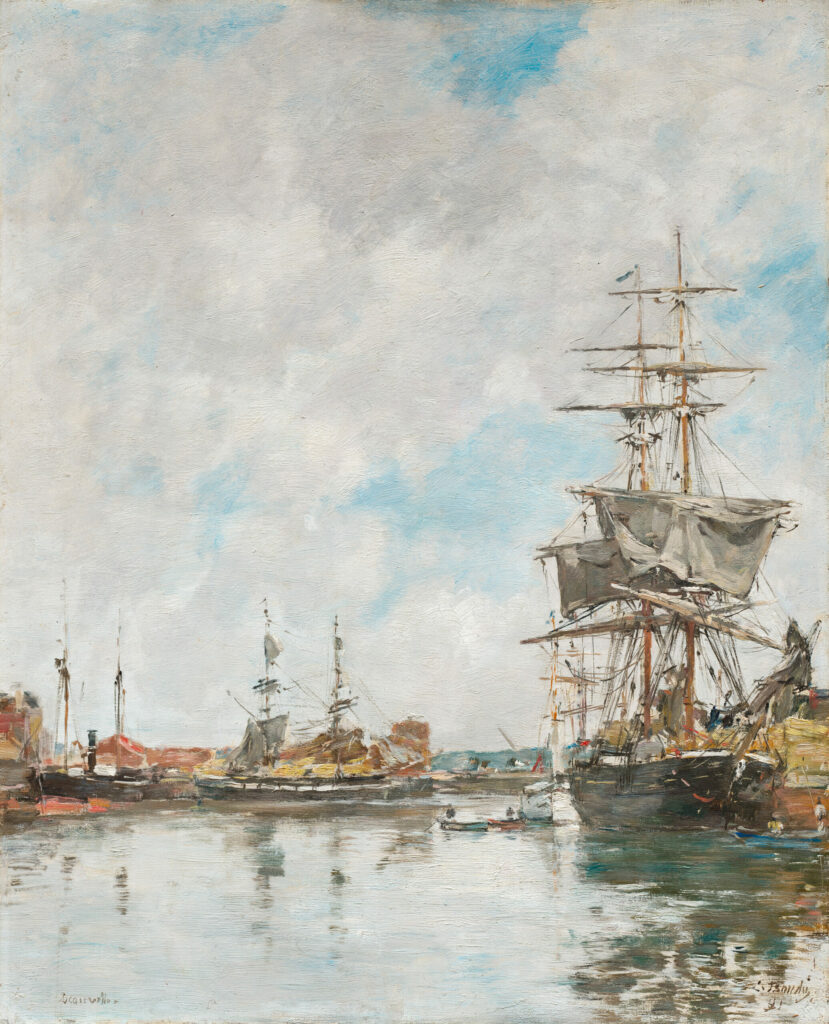
The Dock of Deauville (1891) by Eugène Boudin perfectly illustrates the Norman master’s maturity in his representation of harbor scenes.
This work testifies to the evolution of his technique toward a more synthetic and atmospheric approach. The artist here favors general impression over anecdotal detail, capturing the very essence of nautical life rather than its commercial bustle. His free and rapid brushwork economically suggests the complex structures of rigging: slender masts, billowing sails, taut cordage. The clear palette dominated by pearlescent grays and golden ochres creates a characteristic luminous harmony. The shifting reflections on calm water and cloudy sky express that particular sensitivity to atmospheric variations that makes Boudin a precursor of Impressionism. This poetic vision of Deauville harbor reveals an artist concerned with capturing the soul of Norman maritime places.
Further information
- The Dock of Deauville, in 1891, by Eugène Boudin, Gift of Leonard C. Hanna Jr., for the Coralie Walker Hanna Memorial Collection 1939.165
- 46.7 x 37.8 cm (18 3/8 x 14 7/8 in.), oil on wood panel
- Cleveland Museum of Art, not on view
- https://www.clevelandart.org/art/1939.165
Eugène Boudin (1824-1898) remains a major figure in 19th-century French painting and the spiritual father of Impressionism. Born in Honfleur into a family of sailors, he developed an early passion for maritime landscapes and the changing skies of Normandy. Encouraged by Corot and Troyon, he specialized in plein air painting, a revolutionary technique for the time. His “sky studies” and bourgeois beach scenes caused a sensation at the Parisian Salons. Mentor to young Claude Monet, whom he introduced to painting from nature, Boudin profoundly influenced the nascent Impressionist movement. His free technique, sensitivity to atmospheric effects, and fidelity to Norman landscapes make him one of the masters of French pictorial modernity.



